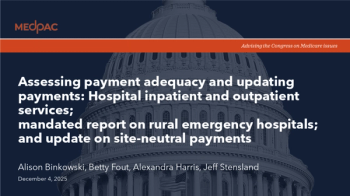
Advanced Primary Care Management Services: A new proactive model for whole patient care
Teams, tech and accountability are part of a new model to improve care for patients with complex or chronic conditions.
Chronic and complex diseases have been on the rise in recent years, with an estimated 129 million people in the United States having at least
New technologies, procedures and techniques have helped evolve the role of the PCP to more efficiently and effectively lead and take charge of an individual’s care and condition management, facilitating communication and coordination with all other care team members involved in the care journey, including specialists, post-acute coordinators and pharmacists. While care models have been more reactive — addressing health issues as they arise — providers are trying to identify ways to shift toward proactive care models that look to solve health problems before they become issues. Proactive, preventive care will more effectively manage and treat complex and vulnerable patient populations that are growing every year. In the current model, physicians often do not have the bandwidth and time to manage their current workload while managing proactive care strategies for each patient.
In January, the
Advanced Primary Care Management’s impact on vulnerable patients
When it comes to managing complex and chronic conditions for vulnerable patient populations, the regular tools that PCPs have available to them to monitor and manage treatments for these patients are not enough. I’m sure they would agree. While electronic health records (EHRs) have been introduced to help streamline processes, a study published in
The future care model that seamlessly manages minor and major conditions for patients, polychronic or not, needs to be built around accountable, team-based methods that bring all physicians and other clinicians, specialists, care coordinators and virtual navigators into the fold with shared goals and clearly defined roles in mind. This new advanced primary care model is a step in the right direction.
Medicare beneficiaries, including patients with one or more chronic conditions, are eligible to participate in this new program and in return will be better connected to their provider and have 24/7 access to care through remote monitoring and telehealth services. Patients will also experience enhanced care coordination from their physicians and a more proactive management strategy for their chronic conditions — all of which will lead to overall better outcomes.
In addition, providers will experience simplified and more streamlined administrative work as they are able to bill under the APCM code once a month rather than charging for every minute and individual service at each visit. Physicians will also be able to monitor patients’ conditions more closely through their remote monitoring systems and to intervene in a timely manner for any adverse events, further mitigating the need for emergency care and strengthening the proactive care management method. This new method is anticipated to improve patient outcomes greatly while also improving workflows for providers and reducing the total cost of care.
Next steps for successful new model implementation
While this model is proof that health care is moving in the right direction, ensuring the model works properly will require much discipline. Scaling these models to address more patient needs with the same quality care will require operating discipline, which includes weekly rhythms, playbooks, centralized quality oversight and aligned incentives between the various stakeholders. Without this structure, operations can very easily crumble and revert back to inefficient and ineffective methods of managing care, especially as organizations grow.
Primary care cannot continue to sit in isolation as an independent venture for patients to visit once a year or as needed. To optimize patient outcomes, primary care must be tied closely to hospitals, post-acute care facilities and other specialties that patients may seek care from. There needs to be advanced data sharing and mutual accountability in play for a proactive care model such as APCM to work, and this can be achieved by leaning on advanced technology to gain and share insights, monitor patient journeys, and enhance the support that providers and facilities are able to provide. Health care needs to be focused on whole-person care to see any significant improvement in metrics beyond Health Care Effectiveness Data and Information Sets — we need to focus on lowering the total cost of care, reducing avoidable readmissions, limiting emergency room usages and longitudinal outcomes to truly show value to patients and their lives, not just ticking boxes. These are the premises of the newly introduced APCM model, and this is what will help shape the future of health care and promote a healthier society.
Ahzam Afzal, PharmD, is the co-founder and CEO of
Newsletter
Stay informed and empowered with Medical Economics enewsletter, delivering expert insights, financial strategies, practice management tips and technology trends — tailored for today’s physicians.
















